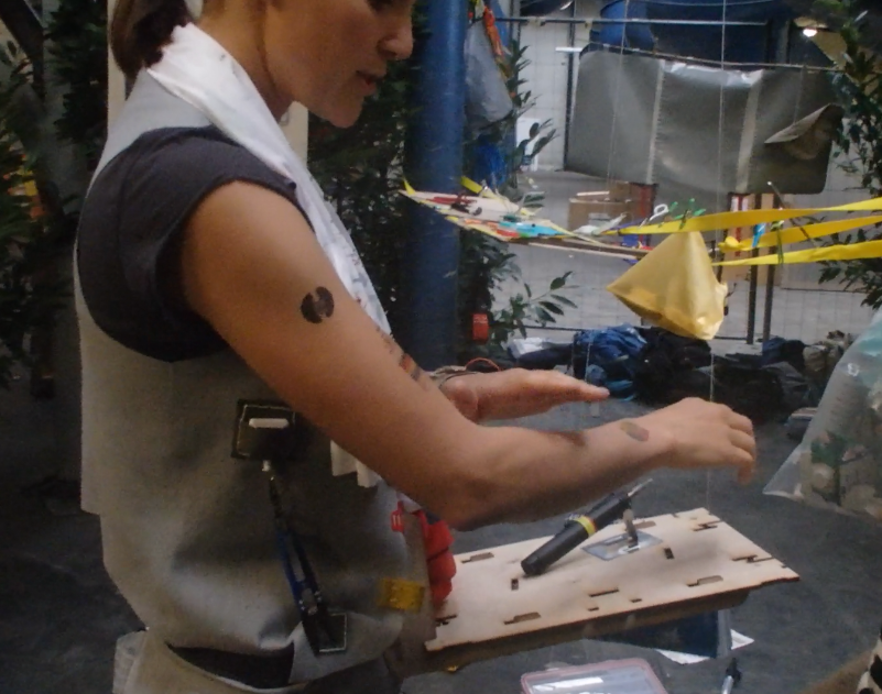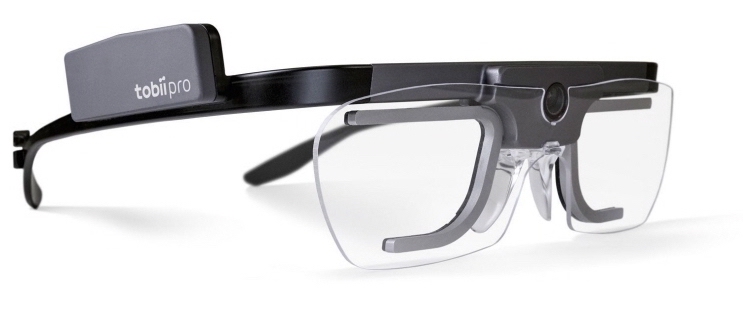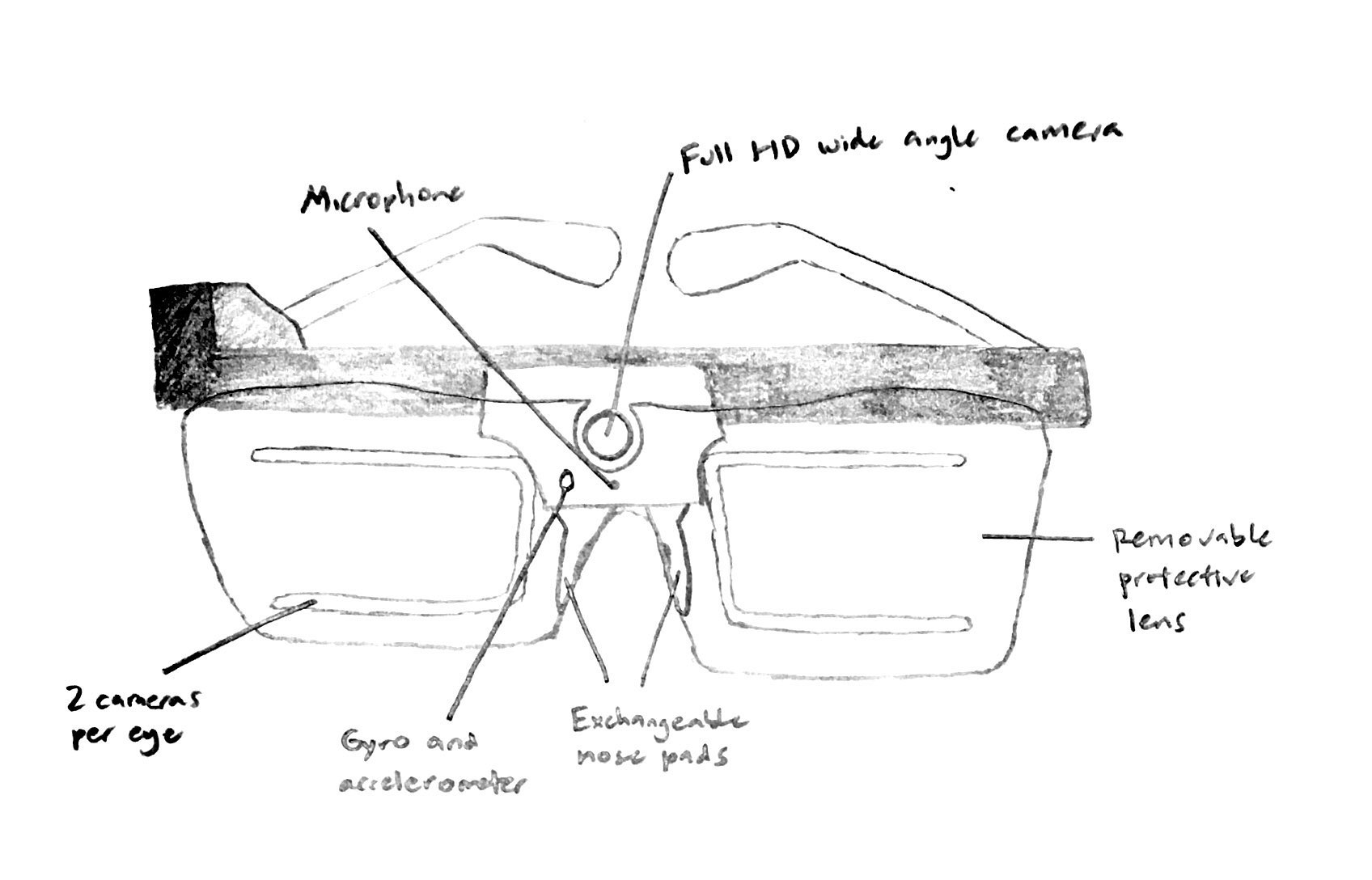Creative practice
Dance painting (to sum up this practice in a sentence, it is where dancers dunk themselves in paint and dance on a canvas to create art)
Tools used in dance painting
1. Canvas
2. Loudspeaker (for music)
3. Bricks (to act as paperweight for the canvas)
4. Paint
5. Bowls (to hold paint)
6. Squeeze bottles (to spray paint)
7. Human body (medium for art creation)
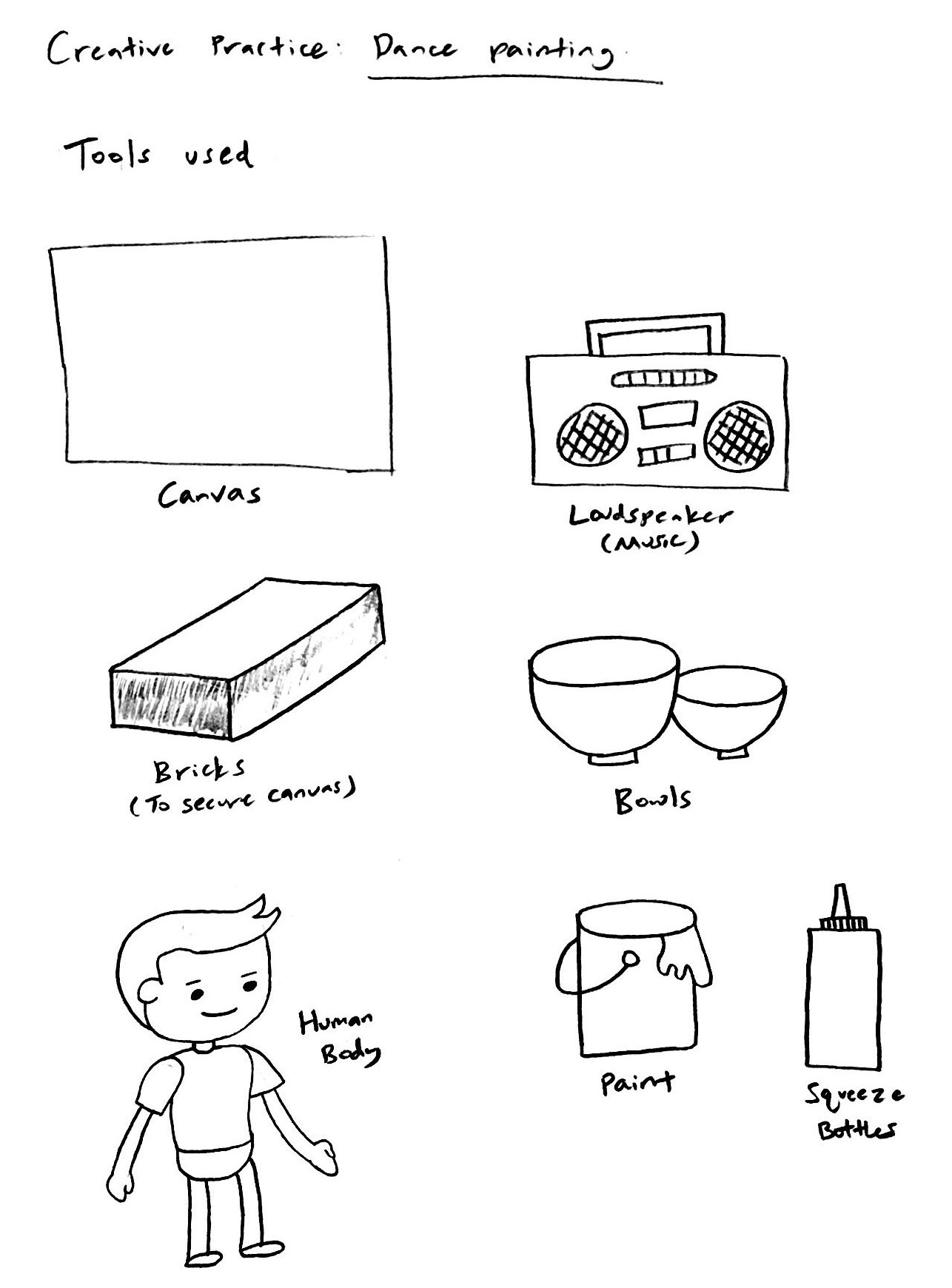
Idea 1: Wearable dance painting studio for dancers with sensitive skin

The motivation behind this wearable dance painting studio is to help dancers who have sensitive skin to participate in dance painting. They will not be able to pour paint over themselves as it will trigger an allergic reaction as a result of the chemicals in oil paint. Hence, this is a ‘neater’ version of dance painting where dancers take spray paint cans from a belt+tray device and create art by dancing in a cylindrical canvas held upright by supporting stands. This way, they need not pour oil paint over themselves. By having the device worn at the hip area, there is minimal disruption to the dance movements and art performance. There is also a sling pouch slung across the dancer’s back to hold the supporting stands and canvas to make the studio portable. The sling bag is on the back as the canvas and supporting stands are long. Transporting the items will be easier if they were carried on the back (does not interfere with bending).
Scaled-down model of idea 1
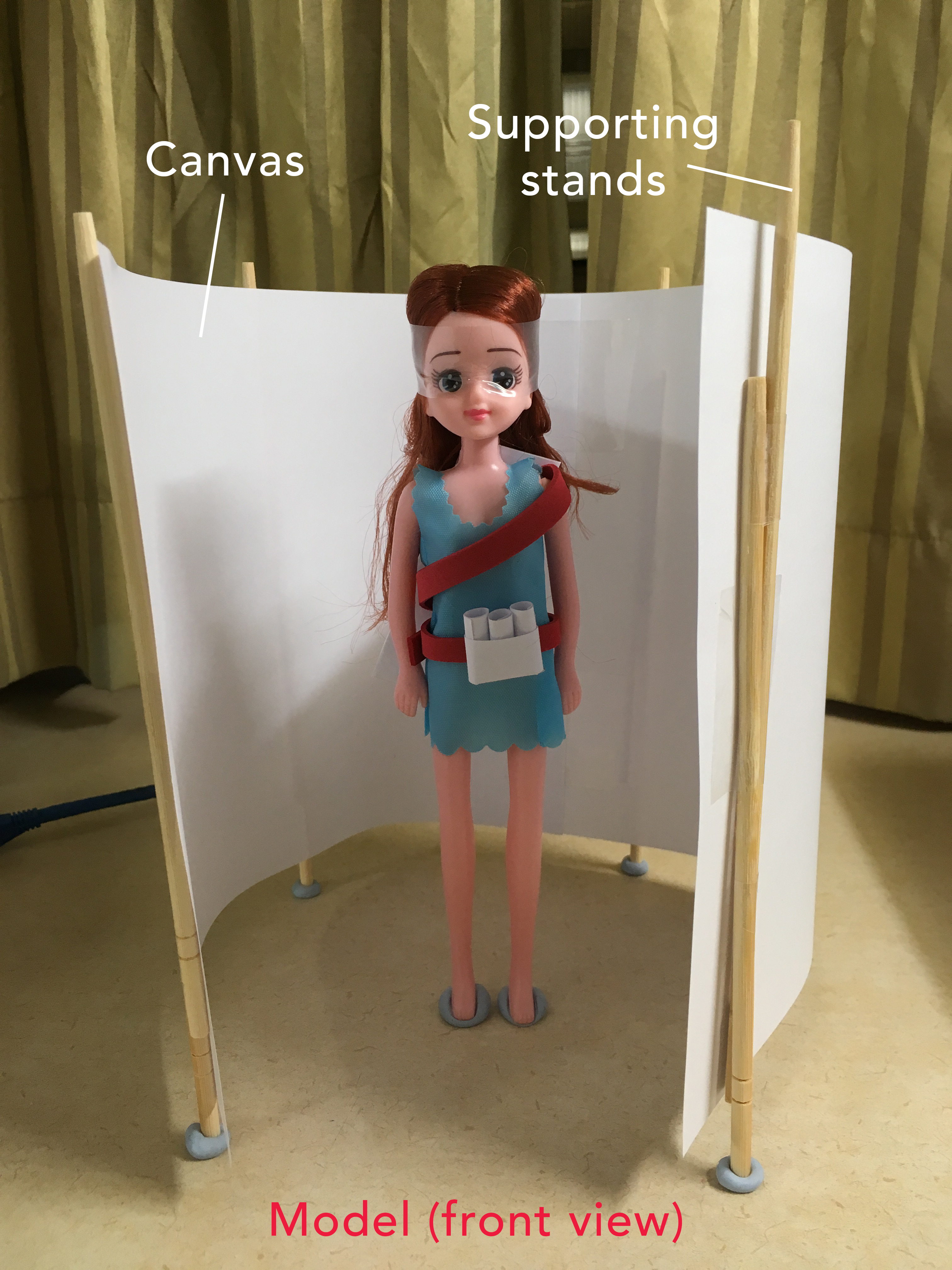



Working prototype for idea 1 (belt+tray device)

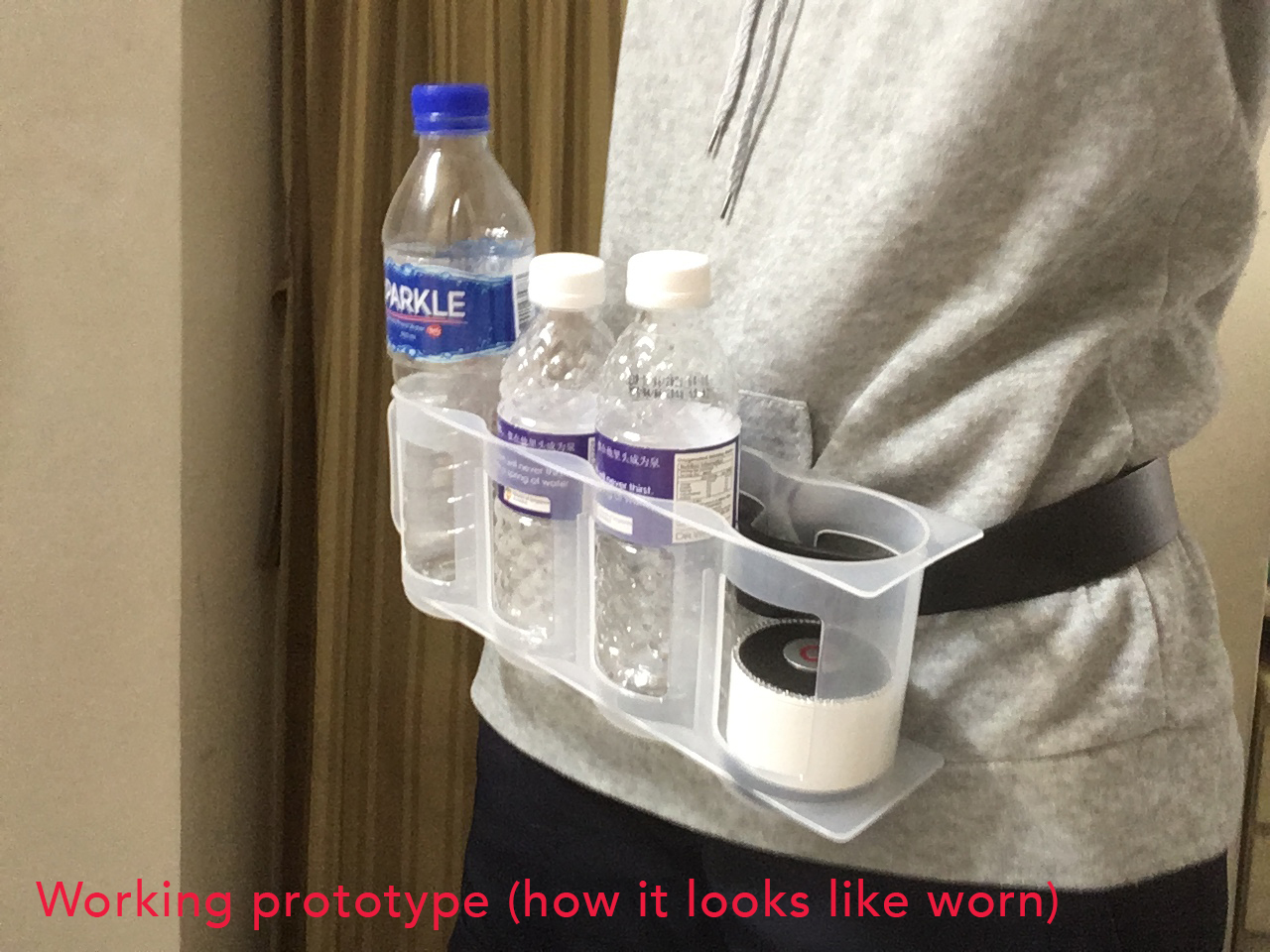
Idea 2: Nonsense wearable dance painting studio that impedes the art form
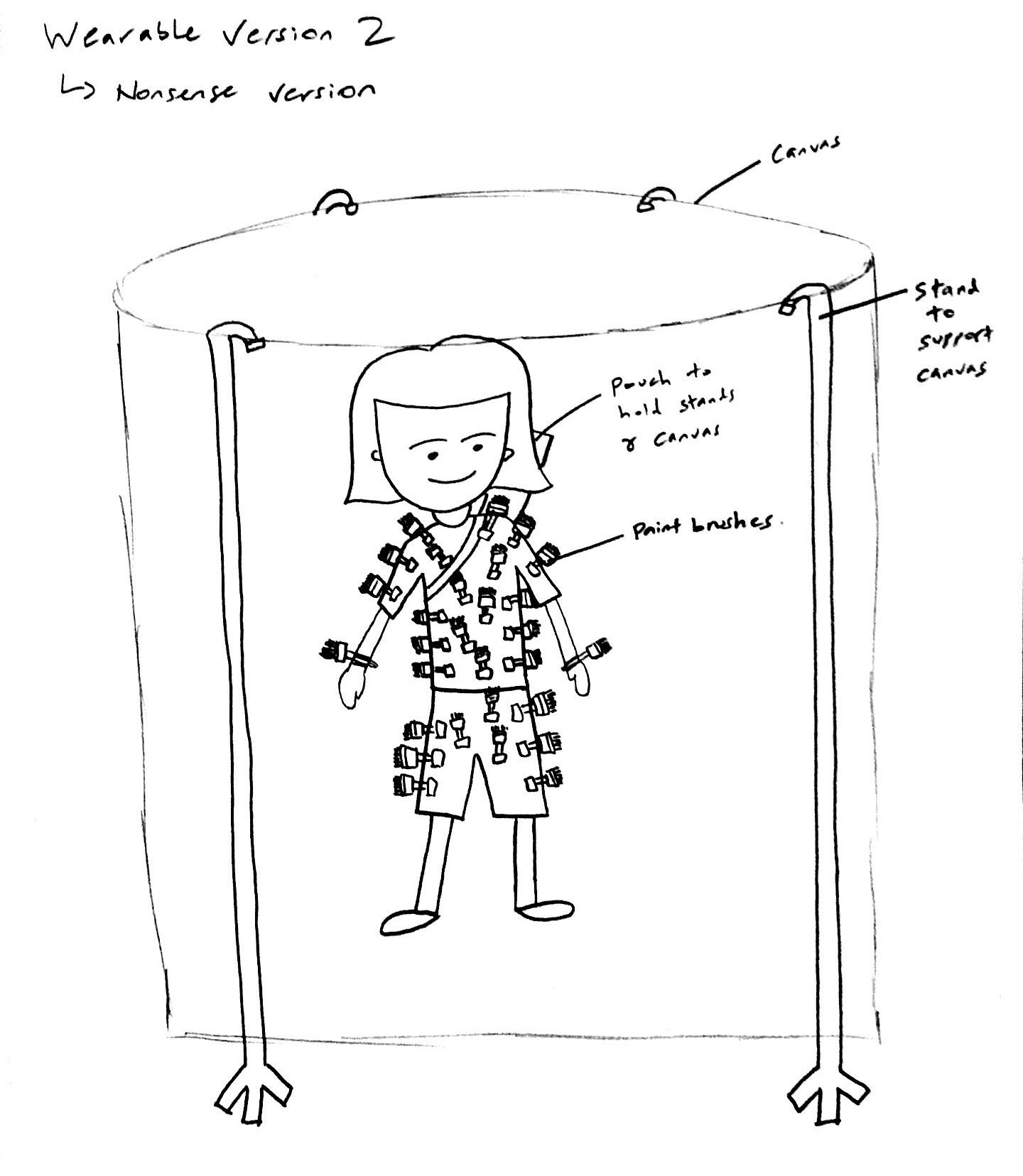
The gist of this wearable studio is to have a shirt, pants and wristlets full of paint brushes protruding out of them. This idea does not work because firstly, how are the dancers going to get the paint onto the brushes? They will either have to take the brushes out one by one and dip them in paint, or to jump into a pool of paint for efficiency’s sake. Secondly, in order to get the paint onto the canvas, close contact with the canvas has to be made. This limits the dance movements and disrupt the performance. Hence, this idea does not solve any problem.
Reflection
After today’s lecture, I realised that one important element is lacking in my ideas for this assignment. That is, my ideas do not include any form of futuristic element (i.e. technological advancement), which is required for the final project. These ideas are simply alternatives to how dance painting is performed today. Hence, to address this issue, I could possibly introduce a science fiction element to my ideas by creating a suit that sprays paint out of it. The dancer will have to think of the colour and spray pattern in his/her brain while dancing, and the suit will sense the mental information from the brain waves and execute what the dancer wishes accordingly.
